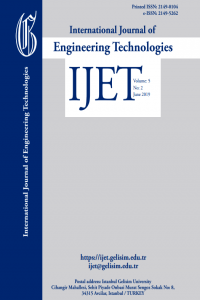Modelling of Instant Solar Radiation Using Average Instant Temperature of Ogbomoso, South Western, Nigeria
The paper is aimed at proffering an alternative means to the meteorological measuring stations by generating models for average instant solar radiation as a function of instant average temperature at places where measurement are not available. The data were processed using Microsoft excel software programming and regression analysis to generate a set of models for both morning and afternoon sessions of instant solar radiation of Ogbomoso as a function of temperature. In order to validate these models, statistical indicators like RMSE, MBE and MPE were used. The value of RMSE, MBE and MPE statistical indicators for morning and afternoon set of data were calculated to be 0.001219, -0.0000002, 0.0059% and 0.00033769, -0.00171225, -4.82%, respectively. From the t-test statics, percentage error between the measured and calculated values of instant average temperature, it is revealed that the set of models in this work can adequately be used in place of the data from the measuring stations since there is complementary relationship between the measured and the calculated instant solar radiation of Ogbomoso. And this modelling result could be used to estimate instant solar radiation at places where measurements are not available to design high performance solar radiation related devices.
Keywords:
Instant solar radiation, average instant temperature modelling, statistical indicators, Nigeria,
___
- REFERENCES
- N.N. Gana, K. Ral. Jitendra, Musa Momoh, (2014) “Estimation of Global and Diffuse Solar Radiation for Kebbi, North Western Nigeria”, International Journal of Scientific & Engineering Research, Vol. 5, 1: January 2014, 1654-1661.
- F. Ahmad, I. Ulfat, (2004) “Empirical Models for the correlation of monthly average daily global solar radiation with hours of sunshine on a horizontal surface at Karachi”, Pakistan. Turk. J. Phys. 28:301-307.
- -
- Page, J.K., (1961) “The estimation of monthly mean values of daily total shortwave radiation on vertical and inclined surfaces from sunshine records for latitudes 40oN – 40oS”, In proceedings of UN conference on new sources of energy. pp. 378-390
- A.N. Maghrabi, (2009), “Parameterization of a simple model to estimate monthly global solar radiation bases on meteorological variables and evaluation of existing solar radiation models for Tabouk, Saudi Arabia”, Energy conversion and management. 50: 2754 –2760.
- -
- N.L. Mahdi, N.S. Baharn, F.F. Zaki, (1992) “Assessment of solar radiation models for the Gulf Arabian countries”, Renew. Energy 2(1):65-71.
- L.E. Akpabio, S.O. Udo, S.E. Etuk, (2005) “Modelling Global Solar Radiation for a Tropical Location: Onne, Nigeria”, Turk. J. Phys. 29:63-68.
- G.A. Agbo, A. Baba, T.N. Obiekezie, (2010) “Empirical Models for the correlation of monthly average global solar radiation with sunshine hour at Minna”, Nig. J. B. Res. 1 (1):41-47.
- I.U. Chiemeka, (2008) “Estimation of solar radiation at Uturu, Nigeria”, Inter. J. Phys. Sci. 3 (5):126-130.
- G.A. Agbo, (2012) “Estimation of Global Solar Radiation at Onitsha with Regression analysis and artificial Neural Network Models”, Res. J. Recent. Sci. 1 (6):1-8.
- F.W. Burari, A.S. Sambo, (2001) “Model for the prediction of global solar radiation for Bauchi using Meteorological Data,” Nigeria Journal of Renewable Energy, vol. 91, pp 30 -33.
- A.M. Al-Salihi, M.M. Kadum, A.J. Mohammed, (2010) “Estimation of global solar radiation on horizontal surface using meteorological measurement for different cities in Iraq,” Asian Journal of Scientific Research, vol 3, no 4, pp 240 – 248.
- E.O. Falayi, J.O. Adepitan, A.B. Rabiu, (2008) “Empirical models for the correlation of global solar radiation with meteorological data for Iseyin, Nigeria,” International Journal of Physical Sciences, vol. 3, no 9, pp 210 – 216.
- P.R. Bavington, (1969) “Data reduction and error analysis for the physical sciences”, McGraw-Hill; New York.
- ISSN: 2149-0104
- Başlangıç: 2015
- Yayıncı: İstanbul Gelişim Üniversitesi
Sayıdaki Diğer Makaleler
Gurhan SAHİN, Seyfettin BAYRAKTAR
